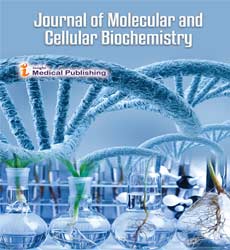The Influence of Y -Ray Irradiation at Low Doses on Antioxidant Activity, Phenolic Compounds Profile, Chlorophylls and Structure of Cladode Powder (Opuntia ficus-Indica)
Abstract
Cladode powder was treated at low doses (0.5 kGy, 1 kGy and 2 kGy) to investigate the effect of γ-irradiation on physicochemical properties, antioxidant activity and the bioactive profile. The main bioactive compounds were identified and quantified by High Performance Liquid Chromatography (HPLC). The degradation effect on the structure was studied by UV-visible spectrum, FT-IR and SEM analysis. The results indicated that γ-irradiation has no effect on the chemical composition (°Brix, moisture and ash) whereas significant (p ≤ 0.05) increase in chlorophylls B and pheophytins content was revealed. Irradiation treatment increased the Hunter colour‘L’and ‘b’values while‘a’value increased. Samples irradiated at 2 kGy contained high phenolics and flavonoids content (887.64 mg GAE/100 g DW; 302.5 mg CE/100 g DW) and antioxidant capacity (88.40% and 85.21% for DPPH and ABTS assays). The major bioactive compounds of cladode powder including phenolic acids, flavonoids identified were syringic acid, caffeic acid and rutin. Further, FT-IR, UV spectrum and SEM analysis indicated that γ-irradiation introduced no significant changes into the functional group and particle morphology. Therefore, the effects of γ-irradiation at low doses were considerable and would be effective to increase the shelf life and bioactive quality of cladode powder.
Open Access Journals
- Aquaculture & Veterinary Science
- Chemistry & Chemical Sciences
- Clinical Sciences
- Engineering
- General Science
- Genetics & Molecular Biology
- Health Care & Nursing
- Immunology & Microbiology
- Materials Science
- Mathematics & Physics
- Medical Sciences
- Neurology & Psychiatry
- Oncology & Cancer Science
- Pharmaceutical Sciences
